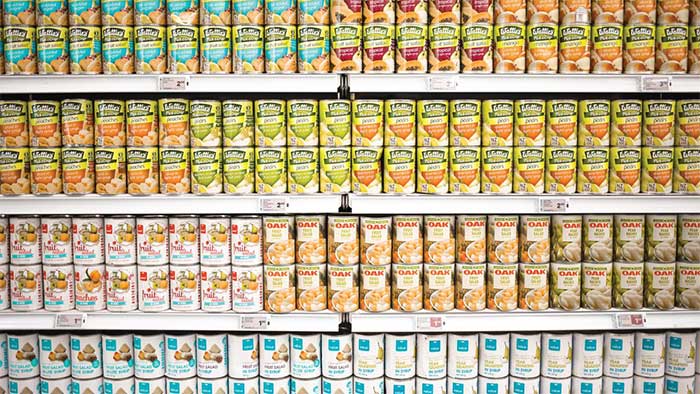Expiration dates (or “best before” dates) do not solely indicate when food is spoiled, but rather serve as a guideline for consumers to decide whether to eat the product or not. In reality, many products remain edible even after their expiration date has passed.
The shelf life of food is the period during which the food maintains its best quality as recommended by manufacturers to consumers.
In the United States, the true meaning of expiration dates varies significantly, particularly due to the lack of federal oversight regarding labeling.

Many people tend to throw away expired food without hesitation, but according to food scientists, a significant portion of food deemed waste is actually perfectly edible – (Photo: GALLERY STOCK).
For example, milk in Idaho can be sold by grocery stores up to 10 days later than in neighboring Montana. Some states, such as New York and Tennessee, do not require expiration date labels at all.
Expiration labeling in the U.S. has become so confusing since it first appeared in the 1970s. At that time, most Americans began relying on grocery stores to purchase food and depended on manufacturers for information regarding food freshness.
Today, “the majority of consumers believe these labels relate to safety”, said Emily Broad Leib, a Harvard law professor and founding director of the Food Law and Policy Clinic.
A study co-authored by Leib in 2019 found that at least 84% of Americans throw away food that is approaching its labeled date.
However, quality and safety are two very different things. Many products can be consumed even long after their expiration date.
Leib cites milk as an example, one of the most wasted food items globally. According to her, sour or curdled milk can be safe for consumption. In fact, it can be used as an ingredient in pancakes, soft cookies, and skin-softening masks.
“Milk is one of the safest food items on the market because the pasteurization process kills all germs,” she stated.
Her general rule for other refrigerated items is that anything placed in the fridge or oven is safe after the expiration date, as long as it does not smell or look unusual. In other words, cooking is a “kill step” for harmful “intruders,” if done correctly.
Food is considered unsafe if it carries pathogens such as listeria, E. coli, or salmonella. These pathogens can enter food through contamination, such as when water contaminated with E. coli is used to irrigate vegetables.
However, there are certain types of food that pregnant women should avoid once they have “expired”, including deli meats, raw fish, sprouts, unpasteurized milk, and cheese.
According to Professor Brian Roe at the Food Innovation Center at Ohio State University, these items can harbor listeria (a type of bacteria not visible to the naked eye) and are often produced in cold environments, meaning they do not undergo a germ-killing step before being served.
According to The Atlantic, food waste has long been a significant issue related to climate change. The annual emissions from rotting food in the U.S. are approximately equivalent to the emissions from 42 coal-fired power plants.
On the other hand, with the devastating impact of inflation, it is also a concern for consumers’ wallets.
Zach Conrad, an assistant professor of food systems at William and Mary University, states that people waste about $1,300 a year due to food being “expired.”
The nonprofit organization ReFED estimates that around 138 million kilograms of food are unnecessarily discarded during Thanksgiving in the U.S.


















































